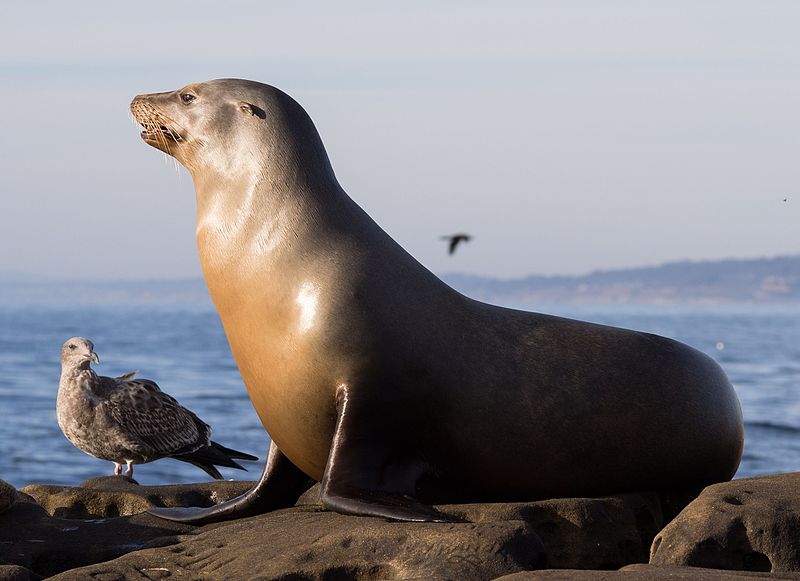
California Sea Lion Facts
- Surprisingly, the remarkable California Sea Lion remains one of only six known surviving types of sea lion. Quite sadly, one other species, the Japanese Sea Lion, became extinct in the 1950’s. In the meantime, three others now rank as Endangered.
- The incredible creature also has another title by which it’s known, though. That’s the technical term many scientists use for it. That’s a difficult one for the layperson to pronounce, however. This holds true since that term’s Zalophus californianus.
- The animal received that formal label due to the efforts of René-Primevère Lesson. The respected French naturalist accomplished the first official recognition of it as a separate and distinct species. He managed that scientifically noteworthy feat in 1828.
- This wonder of Nature also represents the species with the largest known current population, out of them all. In fact, estimates place its total numbers at around 350,000 individuals. Only the South American Sea Lion currently approaches it in numbers.
- Due to its current population size, along with other factors, the IUCN presently lists the California Sea Lion as Least Concern. Perhaps the leading contributor to its survival success is the fact of its protection under the Marine Mammal Protection Act.
- Like related species, however, this true marvel of Nature still faces dangers from various threats. These principally include climate change and habitat loss. In recent years, though, trash and chemical pollutants of the food chain have begun to threaten it.
Related Articles
California Sea Lion Physical Description
Perhaps most notably, the gorgeous animal known as the California Sea Lion ranks as one of the smallest of the six surviving species. In addition to this statistic, the animal, like many other similar creatures, exhibits a marked degree of sexual dimorphism.
As a result, males average significantly larger than females. Males attain an average length of about 7.9 ft (2.4 m) and a weight of roughly 770 lb (350 kg). Females average 5.9 ft (1.8 m) in length and only 220 lb (100 kg) in weight. Exceptional individuals do exist, however.
Not only that, but coloring patterns vary between the genders as well. That’s because, like juveniles of both sexes, females typically display a tawny brown coloring. But adult males usually display a darker brown or nearly black color.
While both genders display long narrow muzzles, in contrast, other features of the head and face differ. The males of the California Sea Lion also distinguish themselves by developing a protruding crest with a patch of white hair, and also small manes.
- Kingdom: Animali
- Phylum: Chordata
- Class: Mammalia
- Order: Carnivora
- Family: Otariidae
- Genus: Zalophus
- Species: Z. californianus
California Sea Lion Distribution, Habitat, and Ecology
The name of the California Sea Lion remains somewhat deceptive, as its native range extends well beyond the shores of California, in the United States. In actuality, that range extends along the entire west coast of North America. It runs from Alaska to Central Mexico.
The magnificent creation of evolution also inhabits numerous islands in that range, in addition to various locations on the continental shores. Notably among these locations are the Channel Islands, Isla Santa Margarita, and Punta Eugenia.
Like related species, the California Sea Lion evolved to have a carnivorous diet. As a result, the species consumes a relatively wide variety of seafood prey. However, these primarily include small squid, various fish, and occasionally even clams.
Given its size, its own predators quite understandably remain relatively few in number. But a few species do appear to prey on them, most notably large types of shark, including the Great White Shark. Finally, Orcas form its other main natural predator.
Species Sharing Its Range
Check out our other articles on 8 Truly Monumental Orchids, Island Marble, Bloody Hell Pond, Golden Armadillo Lizard, Northern Bald Ibis, Limnonectes larvaepartus, Giant Oarfish
